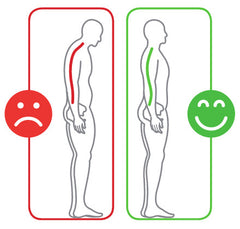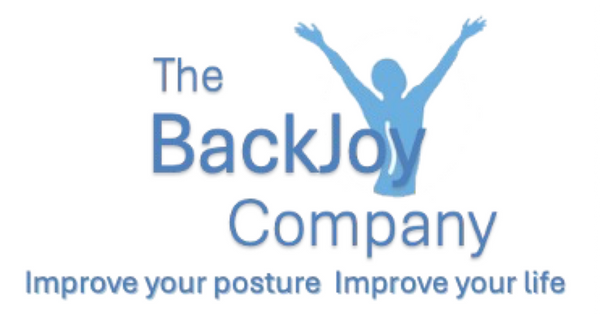Welcome to our store
Add your custom text here to describe your products or services.
Back Pain Treatment
How to Treat and Manage Back Pain
 While drugs like ibuprofen and acetaminophen can reduce inflammation, they don’t always get to the root of the problem and may only mask the symptoms of back pain. A number of alternative approaches will help you alleviate discomfort, address the root cause of your pain and promote health. Our recommendations?—Good posture, back supports, chiropractic care, yoga, massage or back exercises. Below are a few tips to help you treat and manage your back pain effectively.
While drugs like ibuprofen and acetaminophen can reduce inflammation, they don’t always get to the root of the problem and may only mask the symptoms of back pain. A number of alternative approaches will help you alleviate discomfort, address the root cause of your pain and promote health. Our recommendations?—Good posture, back supports, chiropractic care, yoga, massage or back exercises. Below are a few tips to help you treat and manage your back pain effectively.
Why Quick Fixes Don’t Work
- Painkillers. Painkillers like ibuprofen and acetaminophen are great for quickly reducing inflammation, but they don’t address the cause of back pain. According to a 2013 Consumer Reports Survey, of the 70% of back pain sufferers who took over-the-counter medication for their back pain, only 22% found the over-the-counter-medication helpful. Many painkillers also have side effects including liver and kidney damage, ulcers and gastrointestinal problems.
- Heat and Ice. Heat and ice only provide temporary relief from back pain and applying them at the wrong time may actually make the problem worse. Topical applications can contribute to additional pain by irritating the skin.
- Braces. Healthy movement is key to back pain recovery and braces limit that movement. There has not been much evidence to prove that braces actually treat chronic pain.
How to Practice Good Posture
Sitting Posture

- Sit up with your back firmly against the chair and hips upright.
- Choose a chair that allows you to rest both feet flat on the floor while keeping your knees level with your hips at a 90 degree angle.
- Stretch the top of your head toward the ceiling, tuck your chin in slightly and keep your shoulders relaxed.
- Keep your spine in proper “S” curvature with your ears above shoulders and shoulders above hips.
- Keep your monitor an arm’s length away from the face (about 18-24”) and at a height that allows your eyes to be focused 2-3” below the top of the monitor without straining your neck.
- Get up and take a break from sitting at least once an hour. Walk around the office, go up and down a flight of stairs or do some quick stretches.
- If you spend time sitting in your car, adjust your car seat similar to your office chair and make sure to use a proper pelvic support.
Standing Posture

- Balance your weight evenly on both feet.
- Keep your feet parallel.
- Pull in your abdomen and buttocks, making sure to keep hips upright (make sure not to overly arch your back with your buttocks pushed back).
- Keep your shoulders back and relaxed.
- Try not to tilt your head forward, backward or sideways, and make sure your knees are relaxed—not locked.
Sleeping Posture

- Don’t sleep on your stomach!
- Find a pillow that preserves the curve of your neck when sleeping on your back, and keeps your spine parallel to the bed for side sleep.
- Place a small pillow between your knees for side sleep, and under your knees for back sleep.
- Find a mattress with good support. Experts recommend a soft-top mattress with firm coils underneath.
Exercise and Occupational Posture

- Always lift with your legs and bend at the knees, not the hips. Allow your leg and abdomen muscles to do most of the work.
- Stand balanced with your feet planted (see Standing Posture).
- Keep your shoulders back and relaxed (remember: head over heart over hips).
- Participate in sports that are good for your specific condition, and always practice proper form when performing certain exercises.
Exercise and Stretch
Exercise is important for back pain recovery, however, if your back pain is extremely severe, you should avoid exercise. The following forms of exercise are great for preventing and relieving back pain:
Yoga
Practicing yoga is great for your posture and your back. In fact, research has found that twenty percent of the adults that regularly practice yoga specifically do so to improve back pain. To begin, try these simple yoga poses:

- Downward Facing Dog Pose. Start with your feet hip-distance apart and walk your hands out so they’re just in front of your shoulders. Lift your gluteus to the sky and straighten your legs. Make sure your back is straight, your core is engaged and your head is in a neutral position. This pose will strengthen your lower back and improve posture. Hold for several seconds and repeat.

- Child’s Pose. Start on your knees with your arms stretched out in front. Sit back so your gluteus is resting right above your heels. The stretch is great for elongating your back muscles. Hold for five to ten breaths and repeat.
Pilates
Pilates is great for getting strong and lean, but it also helps strengthen core muscles and the muscles that support the spine to prevent and treat back pain and improve posture.

- Swimmers. Lie face down with your legs and arms extended. Lift your left arm and right leg up, hold for a beat, then slowly lower them back to the ground. You should feel this move in your lower back. Repeat on the opposite side and continue alternating for 15 repetitions.
- Russian Twist. Sit on the ground with your knees bent. Tilt back slightly so that your abs are engaged, making sure that your chest is lifted to the sky and your spine is straight. Hold your arms in front of your chest and twist as far left and then as far right as you can. This exercise is great for building core strength and muscles in the low back. Continue rotating for 15 repetitions.
(Use Image: https://backjoy.box.com/s/ut9e052wkbm4bgoatst) LINK DOESN'T WORK
Core
Core strength gives you greater power and flexibility and will lessen pain and stiffness in your back. With a few simple moves, you can improve the strength in your core.

- High Plank. Place your hands on the mat directly under the shoulders with the fingers spread for a wide base. Place the balls of your feet on the mat, hip distance apart, keeping your spine perfectly straight. Hold the high plank for 15-30 seconds. Repeat three times.

- Side Plank. Place your left hand on the mat directly under your shoulder and stack your feet on top of one another. Lift your hips off of the ground and raise your right arm to the sky. Hold for 15-30 seconds. Repeat three times, then switch sides.
Walk or Jog

Aerobic exercise like walking or jogging can keep you and your back mobile. The great think about walking is that it will not further aggravate back pain, but you still get the benefits of aerobic exercise—like endorphins that physically and mentally make you feel better. Start small—take a leisurely walk around the block—and build up your speed and distance from there.
Stretch

- Spine. Stretching and lengthening your spine will help increase mobility and decrease back pain.
- Low Back Stretch. Pull your knees to the chest while lying on your back with your head flexed forward. You should feel the stretch in your low back. Hold the stretch for 20-30 seconds (this time-frame allows the muscles around the spine to loosen) and then repeat three times.


- Cat-Cow Stretch. Kneel on the floor on all fours with your hands directly beneath your shoulders, your knees under your hip bones, keeping your spine straight. Inhale and tuck your chin to your throat, rounding your back by hollowing out your stomach and pushing your hands away from the floor. Exhale, rotating your tailbone and heart up towards the ceiling. Repeat five times.
- Hip Flexors. Because the hip flexors connect to all five lumbar vertebrae, they are important muscles to stretch.

- Hip Flexor and Calf Stretch. Plant your left foot in front of the right foot in a slight lunge with the left knee bent. Hold for 30 seconds. Straighten out the left leg and reach your left hand to the floor. Hold for 30 seconds. Repeat on the other side.
- Kneeling Hip Flexor Stretch. Start in a lunge position. Your front foot should be flat on the floor and the top of your back foot back should be pressed against the floor. Place your hands on your front knee, straighten the hip of your back leg by pushing your hips forward. Hold for 30 seconds on each leg. Repeat five times.
Get a Massage
Massages are great for relieving pain and tension in the back muscles. Before visiting your masseuse, be sure to check with your doctor. Depending on the cause of your back pain, a massage might make it worse.
Maintain a Healthy Weight
Extra belly fat will exhaust your muscles and add pressure on the tissue around your vertebrae. That pressure can throw off the natural curve of your lower back, causing low-back pain.
Exercise
Walk, swim bike or do some other aerobic activity to help control your weight. Add in strength-building moves to keep your core strong (a strong core helps support your spine).
Eat the Right Foods

The foods you eat can either help or contribute to pain and inflammation in the body. Take a tour of your pantry and remove all foods containing high-fructose corn syrup, artificial sweeteners, and other ingredients that you can’t pronounce. Replace those foods with dark green leafy vegetables, broccoli, chard, kale, nuts and seeds.
Avoid Heavy Lifting and Carrying
- Lifting. Develop lifting habits that prevent back strain. When you do need to lift a heavy object, bend at your knees (not at your waist) and allow your leg and abdomen muscles to do most of the work.
- Carrying. Lugging a backpack or purse around by one strap can cause the disproportionate shift of weight to one side, leading to neck and muscle spasms, as well as low-back pain. Choose a bag that is proportionate to the size of your body and that has individualized compartments to help you position the contents effectively. Place the strap diagonally across the opposite shoulder to distribute weight evenly across your back. Alternate your bag to the other shoulder often.
Dress for the Occasion

Avoid Skinny Jeans (or Tight-Fitting Clothes)
When pants are too tight or low riding, this can cause damage to the nerves extending from the thigh to the spinal column. Some symptoms may include tingling, numbness, pain and hypersensitivity in the upper legs as well as stress on the back. Try to wear pants that fit more loosely and ride higher.
- Ditch Your Heels. High heels push the body’s center of mass forward, taking your hips and spine out of alignment. Find shoes that keep your heel and toes at the same height. A wide toe box will help your foot move naturally and keep your weight evenly distributed across the whole foot.
- Evenly Distribute the Weight of Bags and Backpacks. Lugging a backpack or purse around by one strap can cause the disproportionate shift of weight to one side, leading to neck and muscle spasms, as well as low-back pain. Choose a bag that is proportionate to the size of your body and that has individualized compartments to help you position the contents effectively. Place the strap diagonally across the opposite shoulder to distribute weight evenly across your back. Alternate your bag to the other shoulder often.
- Find a Supportive Bra. Ill-fitting bras can affect the curve of the spine and lead to upper back problems. Research shows that most women wear the wrong size bra, leading to extensive hunching and straining as compensation for discomfort. Get fitted by a bra professional to make sure that you’re wearing the correct size of bra. Find a bra that offers the right support, and keep posture in mind as you try different bras on.
- Carry Your Wallet in the Front Pocket. Sitting on your wallet can cause your pelvis to twist, leading to misalignment of the spine and potential sciatic issues. Carry your wallet in your front pocket or remove it from your back pocket before sitting down.
- Quit Smoking. Studies show that smokers are twice as likely to develop back pain as those who have never smoked or quit. Smoking lessens the flow of oxygen to cells all over your body, including those that control the motion in your back. Seek assistance and get the help you need to quit.
- Relax. Mindful relaxation practices like yoga, meditation, tai chi, and deep breathing will reduce physical stress and strain while putting your mind at ease.
